Civilisations Stories: 12 amazing treasures on your doorstep
27 April 2018
Civilisations Stories is a collection of BBC One films, unique to every English region, which explore how art and design have been used to reflect identities and cultures. Below is a selection of amazing treasures – including paintings, photography, pottery, sculpture, architecture and design – that offer a fascinating insight into our pasts.
South: Photography as art
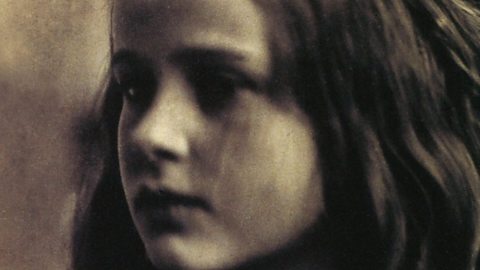
Julia Margaret Cameron - photography as art
Tomasz Schafernacker looks at the innovative photographic art of Julia Margaret Cameron.
Julia Margaret Cameron carved a reputation as one of Britain's pioneering photographers in the late 19th Century.
She took the new technology around photography and made it into an art form. Her photographs have an intimate, otherworldly feel, characterised by her use of soft focus and light experiments. Cameron's portrait of Annie called 'My First Success' was arguably the first close-up, portrait photograph, using unconventional techniques.
Groundbreaking artist
-
![]()
The early photography of Julia Margaret Cameron
Exhibitions celebrating the pioneer of photography.
North East: Regina tombstone
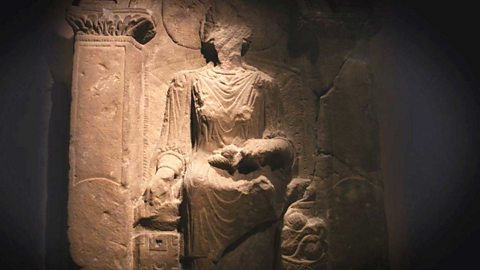
The Regina tombstone
The Regina tombstone at Arbeia fort tells us the story of a mixed-race marriage.
The Regina stone is one of the finest tombstones from the Roman Empire but it also tells the story of multi-cultural life in the small northern town of South Shields.
It shows a woman knitting with her domestic products laid out around her. But the inscription on the tomb tells a different story - that of an ex-slave married to a man called Barates who hailed from from Palmyra in Syria. This locally carved sandstone monument illustrates the diversity of life on the northern frontiers of the Roman Empire.
Long lost ruler
-
![]()
Head of Augustus
How a decapitated bronze head of a great Roman emperor was perfectly preserved under desert sands.
East: The Rudham Dirk
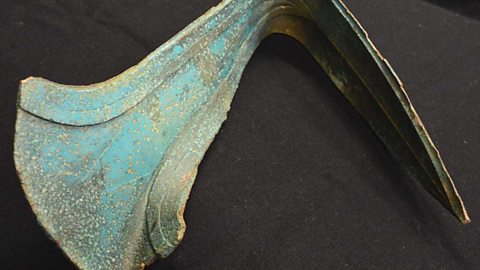
Video: The Rudham Dirk
Ray Mears discovers the Rudham Dirk, a stunning treasure of the Bronze Age.
The Bronze Age was a period of evolving civilisation, art and technology resulting in many great treasures.
One of Britain's greatest archaeological discoveries from this period is the Rudham Dirk which dates back to around 1500 BC. It is only one of only six surviving ceremonial dirks in Europe. Although its design looks like a weapon, it is thought to have been a symbolic artefact with either a religious or ceremonial purpose.
Artefacts in your hand
-
![]()
Augmented Reality app
Bring art and culture from across the world to you with this free BBC app.
London: The Huguenot Bible

Video: The Huguenot Bible hidden in bread
Amber Butchart discovers a Huguenot family bible unlike any other.
The arrival of the Huguenots in London is one of the most important migration stories in British history.
It began with persecution and a perilous journey from France in the 17th Century but ended with the Huguenots creating great works of art and design.
The Bible symbolises the importance of faith to these 'first refugees'. Presenter Angela Butchart discovers how one Protestant family hid their Bible in a loaf of bread to avoid persecution in their new country.
Huguenot history
-
![]()
World in a city
Stigmatised by oppressive laws and facing severe persecution, many Huguenots fled France.
South: The Silkstead Head

Video: Head of a young girl
Discovering a sculpture of a young girl which is a fusion of Celtic and Roman styles.
The Silkstead Head is a portrait in bronze of a young girl and dates from around 200 AD. It was found in a sand pit in the village of Otterbourne in Hampshire.
She was probably a Celtic Briton but her portrait has a very Roman look with a classical face. The way she is portrayed is a fusion of Celtic and Roman styles which speaks volumes about the integration of these two communities.
Uncover secrets
-
![]()
Life as a Roman
Use the interactive hotspots to explore the replica Roman villa at Butser Ancient Farm.
South West: Miner's wicker helmet
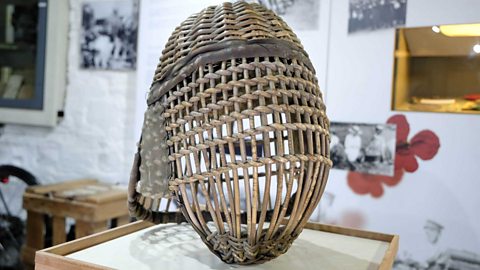
Video: Early miner's protective helmet
Nick Baker discovers a wicker helmet designed to protect injured miners on Dartmoor.
This wicker helmet was designed to protect injured miners during the height of the copper mining industry in Cornwall.
Beautifully crafted in wicker and leather, it had a practical function to enable rescuers to move an injured miner to safety without sustaining further head injuries.
Celebrating mining history
-
![]()
'Man Engine'
The giant mechanical puppet honours Cornwall’s mining heritage.
West Midlands: The Baskerville typeface

Video: The Baskerville typeface
How John Baskerville developed the Baskerville typeface in the 1750s in Birmingham.
John Baskerville developed the revolutionary Baskerville typeface in Birmingham in the mid 18th Century during a period of great scientific and technological innovation.
Baskerville was a designer, craftsman, thinker and businessman. His innovations were a marriage of art and technology which were characterised by his detailed attention to printing, inks, paper and printing. The typeface is still used and loved today.
Font of knowledge
-
![]()
The changing nature of typefaces
What is the thinking that goes into changing a typeface?
South East: The Red House

Arts and Crafts: The Red House
Sophie Robinson explores William Morris' Arts and Crafts House at Bexleyheath in Kent.
William Morris's Red House at Bexleyheath is one of the defining monuments of the British Arts and Crafts Movement. Morris and his circle of artistic collaborators including Edward Burne-Jones and Frank Brangwyn helped to design this classic Arts and Crafts home.
The design was a reaction to what Morris saw as the ugliness and injustice of booming industrialisation in Victorian England. Instead, they took their inspiration from the Kent countryside, local vernacular buildings and traditional crafts.
Art of the craftsman
-
![]()
Morris and Islam
The designs of William Morris are inextricably linked to the curving sinuous arabesques of traditional Islamic Art.
Yorkshire: Scrimshaw art

Video: Scrimshaw carvings
Discover the art of the whaling industry at Hull Maritime Museum.
The coast of north Yorkshire and Humberside was renowned for its whaling industry in the 19th Century. It was common for whalers to create personal gifts for their loved ones back at home whilst they were away on whaling trips. These decorative pieces were called 'scrimshaw'.
This 'rough and ready' art was created by working people. Most scrimshaw art is anonymous, lacking authorship, a date or specific location. They were often beautifully crafted pieces, featuring illustrations and messages to loved ones.
Antique gems
-
![]()
Whaling Scrimshaw by W.L Roderick
Jon Baddeley assesses a bone scrimshaw inscribed with a whaling scene, brought by a Roadshow visitor.
East Midlands: Pitmen paintings
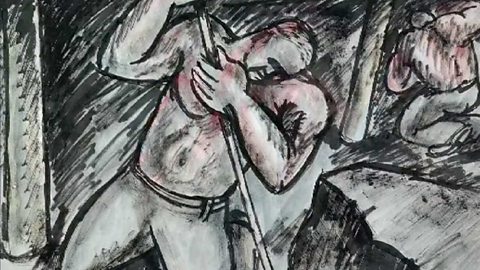
Video: From the pit to the palette - George Bissill
Discover the art of of the original pitman painter, George Bissill.
There is a rich tradition of art in mining communities. Coal mining wasn't just a job, it was a way of life. On canvas, miners found a way of sharing the danger, despair and camaraderie they experienced beneath the ground.
The so-called Northumberland Pitmen Painters in the 1930s became famous but less well known is the story of George William Bissill. He's sometimes described as Derbyshire’s forgotten ‘Pitman Painter’.
Bissell reflected life in a working class mining community with a lack of sentiment and directness. In the 1930s, the art world praised the "raw emotion of his touchingly fresh talent" and "his inner consciousness of what is truly real".
Coal to canvas
-
![]()
Norman Cornish: The last pitman painter
He spent 33 years working in mines before forging a career as an artist.
West: The Abolition Medallion
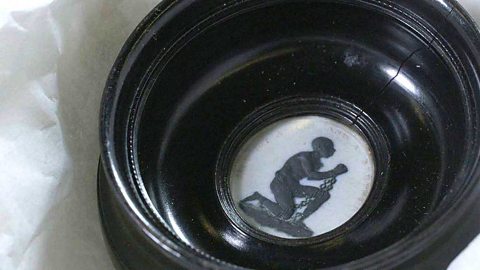
Video: Wedgwood's Slavery Abolition Medallion
Miles Chambers looks at Josiah Wedgwood's anti-slavery medallion.
Josiah Wedgwood was a strong supporter of the abolition of slavery movement. He helped to publicise its cause by making ceramic pieces to draw attention to the issues surrounding the slave trade.
This medallion or slavery plaque dates from the 1787 with a logo designed to win support for the anti-slavery medallion. It is made from Jasperware, Wedgwood's version of Chinese porcelain.
Josiah Wedgwood
-
![]()
First Day Vase
The story of a masterpiece created by a genius of the Industrial Revolution.
North West: Blackpool Tower's exotic treasures

Blackpool Tower's rich history
Behind the history of Blackpool Tower.
Blackpool Tower's iconic architecture has a rich history. This pleasure palace contains many hidden treasures which reveal strong traces of the British Empire style.
The Tower's interior is characterised by exotic designs and decoration which are showcased to great dramatic effect in its spectacular ballroom and public reception areas. The original pleasure complex also included an aviary and zoo with exotic animals.
Blackpool Tower treasures
-
![]()
Spring clean
When half a tonne of chandeliers are winched down for a spot of dusting.
About the programmes
The BBC Civilisations: Stories series comprises 11 programmes which will be broadcast on Monday 30 April on BBC England at 19:30.
-
![]()
The Remains of Slavery
Miles Chambers finds that while Bristol was responsible for the business end of the slave trade, Bath boomed from the profits.
-
![]()
The First Refugees
The Huguenot silk weavers of Spitalfields made a perilous journey to Britain over 300 years ago, but they left a legacy of industry, great riches and artistic masterpieces.
-
![]()
Dartmoor - From Darkness into Light
Nick Baker journeys across Dartmoor to discover the artists and artisans that brought its wild and raw beauty into the public imagination.
-
![]()
Frontier Land
Angela Bruce traces the impact of the Romans on modern-day northern life.
-
![]()
Art, Us and the Truth
Tomasz Schafernaker discovers that our 21st-century obsession with image is nothing new.
-
![]()
The Empire
Stuart Maconie reveals how these discoveries in the days of Empire influenced and reshaped our towns and cities.
-
![]()
Treasures of the Bronze Age
Ray Mears travels back in time 4,000 years into Bronze Age East Anglia in search of clues about its people living in this mysterious yet innovative period of our history
-
![]()
The Art of Mining
How coal created a lasting legacy of art in the east Midlands, and the fight to preserve it for future generations.
-
![]()
Innovation and Inspiration in Birmingham
Mark Williams uncovers tales of flamboyant dandies and dealmakers, inventors and innovators.
-
![]()
Art and the Sea
Ace Bhatti goes to Whitby, Hull and the small village of Staithes to explore how artists were inspired by the sea.
-
![]()
Arts and Crafts in the South East
Sophie Robinson explores the Arts and Crafts movement in the South East and finds out why it was a rebellion against Victorian mass production.























